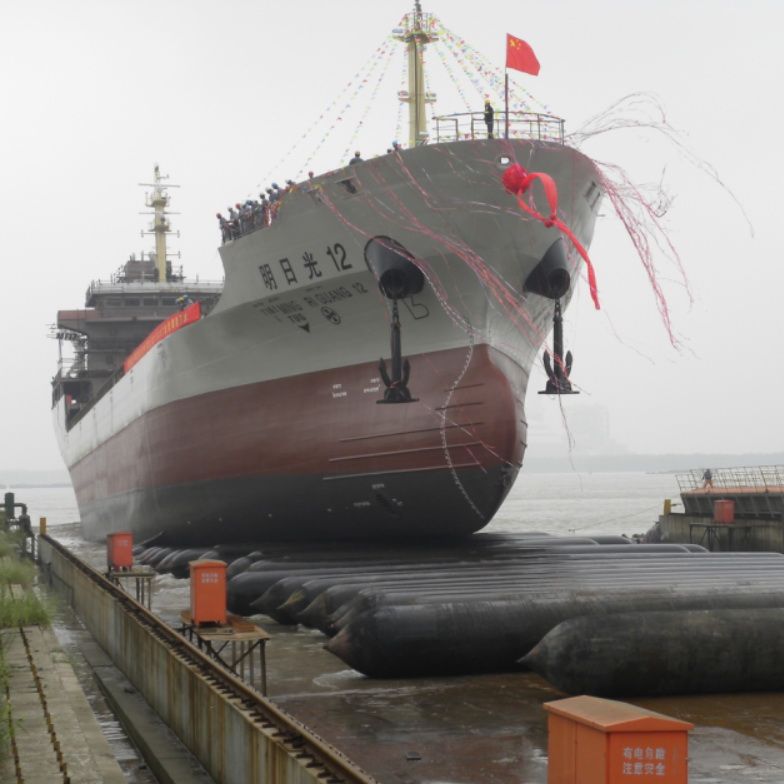
离岸价格
获取最新报价1000 ~ 5000 / Piece
|Minimum Order
位置:
-
最小订单价格:
最小订单:
6 Piece
包装细节:
Pallet
交货时间:
15 to 25 days
供应能力:
1000 Piece per Year
付款方式:
T/T
China
联系人 Mr. Dom
Dianji Industrial Park, Qingdao, Shandong
Ship launching airbags are also known as inflatable
marine airbags, roller bags, air lift bags, and salvage bags.
Marine Airbags range in size from 0.8 to 2.5m diameter, with
lengths of 5.0m to *4.0m \'effective length\'. Marine Airbags are
used for ship launching, haulouts, loading, and floating. They are
widely used in cargo boat launching and landing, lifting and moving
sunken ships, and salvaging stranded boats. Marine Rubber Air bags
have the benefit of not only saving labor and time, but investment
costs. Additionally they are flexible, portable, and
dependable.
Technical Strengths:
1. Higher content Natural Rubber materials, *6%. Higher content natural rubber prove to be superior quality.
2. Gas Tightness. We design to secure the Pressure Decrease is not exceeding 5% around approximately *2 hours
3. Configuration of Airbag Layers. Layers should mean corresponding synthetic tyre cord layers and additional rubber layers combination to secure longer lifespan.
4. Breaking force of Synthetic-Tyre-Cord. Every strand is
over *1kgs breaking force to reinforce the tensile
strength.
*-layer bags that are 1.5m dia x *5m long contain a rubber content
that is not less than *1%. The airbags can safely hold ***-tons
with a safe working pressure of 0.*8MPa while rolling. When
standing still the highest lifting pressure is 0.*0MPa while
holding ***-tons.
~~~~~~~~~~
*-layer bags that are 1.5m dia x *5m long contain a rubber content
that is not less than *1%. The marine airbags can safely hold
***-tons with a safe working pressure of 0.*2MPa while rolling.
When standing still the highest lifting pressure is 0.*4MPa while
holding ***-tons.
AirbagTeam Marine is strongly capable of fabricating up to *2
layers, especially used for salvage and refloatation as salvage
airbag or salvage pontoon.
For price quotes - please answer the following
questions:
1. Type of vessel?
2. LOA (length) of ship?
3. Width of vessel?
4. Vessel\'s actual launched weight (gravity weight)/weight without
cargo?
5. What is the vessel\'s DWT?
6. Type of ground ship is built on? (Dirt, concrete,
etc.)
7. Depth in meters of the water where the ship first enters the
water?
8. What\'s the angle degree of slipway? (Land, not under
water)
9. Please provide the low/high tide schedule at site.
*0. The working height? (The block stand height under the
vessel)
*1. Distance from bottom of propeller to the water level?
*2. Distance from back of vessel (in dry dock) to the water entry
point?